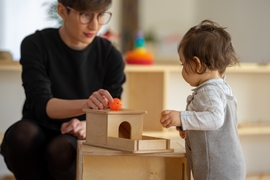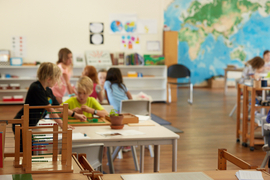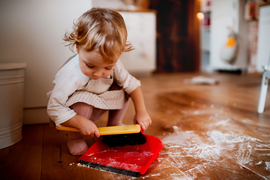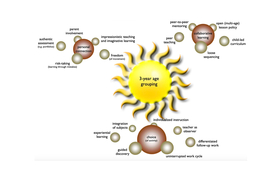
The Montessori curriculum is organised in a developmental sequence from one phase of learning to the next. Individual students, however, are able to work successfully through elements of the curriculum in a sequence unique to themselves. For this reason, comparisons between students may not be meaningful. The validity of norm-referenced assessment and the ranking of students are further reduced in the Montessori context because, in a multi-age classroom, there are comparatively small numbers of children at the same age and stage. Assessment in Montessori classrooms, therefore, is based on each student’s mastery of skills and knowledge at any point in the sequence, rather than on norm-referenced assessment.
Children display their progress and achievement through a variety of modes, including spoken and written language, interaction with others, creative arts such as drama, visual arts, model-making and, importantly, through applying what they have learned in practical ways.
Formative Assessment
Montessori teachers keep careful records to ensure the students are provided with appropriate lessons when they are ready. Daily observation of students and detailed record-keeping help teachers plan the lessons individuals will need next. A Montessori teacher keeps records of:
- lessons given
- the follow up work completed by each student
- student progress and achievement
- difficulties encountered by individual students and how those difficulties were resolved.
Montessori teaching and learning practices provide enhanced opportunities for formative assessment. Here are some examples:
- As the recommended practice for teachers is to have children in their class for three years, they come to know each child in a way that is not possible when children move to a new class with a new teacher every school year. Through close observation over three years Montessori teachers become very aware of their students’ learning styles, strengths and areas requiring further development.
- As most lessons are presented to individuals or small groups, the teacher can easily observe and record levels of understanding and mastery in individuals. Before a lesson draws to a close, all children in the lesson are given the opportunity to show they know how to use the materials. Any student who needs further teaching can review the lesson when it is presented to the next group of students ready for the lesson.
- As so many of the materials are self-correcting, when children have completed the exercises with the materials successfully, both the teacher and the children know that they have mastered the knowledge, skills and understanding designed into the material. The design of the materials also ensures that children are able to work out for themselves when something is not right. They then know they can ask for another lesson, or repeat the activity until they have mastered it. In this way children come to think of making mistakes as their ‘friend’, because a mistake is an opportunity for further learning and deeper understanding.
- When children choose their own work, they reveal a great deal about their interests and abilities at any point in time, which teachers are then able to observe and record.



